HDR TV: What is HDR? How can you get it?
From HDR10 to Dolby Vision, here's everything you need to know about HDR
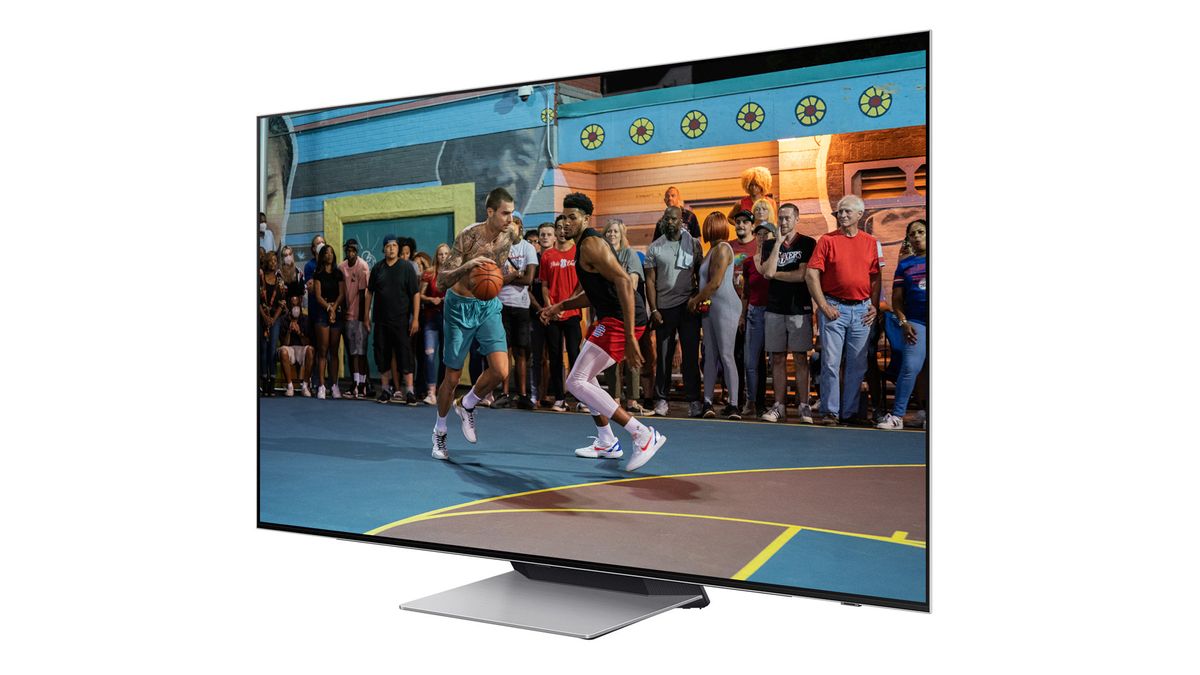
HDR is a term we're all used to seeing when it comes to eyeing up new TVs but, for some, it's just three letters that follow the more commonly understood '4K'. In fact, there are people out there who may be baffled by the concept of HDR and that very likely includes even those who already own an HDR TV.
The truth is that it’s a complicated subject, especially with manufacturers and content creators developing and enabling different varieties of HDR. But it's also worth persevering with, because well-implemented HDR has a transformative effect on picture quality, perhaps even more so than the move from Full HD to 4K.
So, what is HDR exactly, and how will it make your TV pictures look better than ever? Read on for all you need to know about HDR video technology on 4K TVs, games consoles, mobile phones and more...
- Take a look at the best TV deals available right now.

What is HDR?
‘HDR’ stands for 'High Dynamic Range'. The term originates in photography, and refers to a technique to heighten a picture’s dynamic range – the contrast levels between the brightest whites and the darkest blacks.
The theory is: the higher the dynamic range, the closer a photograph gets to all the different tones that you'd see in real life. HDR for televisions is basically the same idea.
Look at the sky. The clouds may be white (or grey in the UK), but there should be definite layers. Around the clouds, you should be able to pick out varying degrees of brightness.
Now look at clouds on your TV. They often look flat by comparison, with bright shades crushed and some layers virtually indistinguishable. There are several reasons for this.
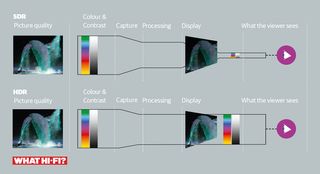
What's so good about HDR?
The first reason is your TV’s limited dynamic range, or its inability to illustrate the finest differences in brightness. This means you miss out on the nuance that should be there. After all, your eyes can differentiate a lot more information than your TV feeds you.
Then there’s the processing that takes place along the chain after something is filmed. It dramatically reduces the amount of information transferred in order to match the technical limits imposed by your TV.
Lately, though, TVs have become much more capable. And by that, we mean bright. A standard TV puts out around 100-300 nits of brightness, where one nit (from the Latin for ‘to shine’) is equivalent to the light provided by one candle. An HDR TV can, in theory, deliver up to 5000 nits.
Of course, that sort of light would be blinding at maximum brightness. This tech isn’t about searing your retinas, though – it’s about widening the range in order to display finer increments of shading.
The idea is to let you see more of what is recorded. You’ll get more details in the shadows and highlights. Sunlight will gleam properly off windows. Colours will be richer and more lifelike, with more delicate gradations and greater shifts in tone. Basically, your picture will look more natural and more real.
Don't believe us? Take it from Hollywood colourist, Dado Valentic, in our video below...
What is HDR10?
Currently, there are four different varieties of HDR for TVs: HDR10, HDR10+, HLG and Dolby Vision. There was once a fifth format, called Advanced HDR by Technicolor, but this never made it to home use.
HDR10 is the original and currently the most common form of HDR. It's an open standard that has been adopted by numerous manufacturers, streaming services (Amazon, Netflix, Apple, Disney+ and more) and the Blu-ray Disc Association (BDA).
According to the Consumer Electronics Association (CEA), HDR10 must meet certain standards, including 4:2:0 colour sub-sampling, 10-bit depth and the BT.2020 colour space. It applies those specific standards to the picture displayed by the TV.
As a general rule, all 4K TVs currently on the market and in the future should support HDR10 as a basic requisite. This means your TV will be compatible with the most widely available 4K Blu-ray discs, 4K players and 4K streaming content – and it should offer a far better picture than a 4K TV without any HDR.
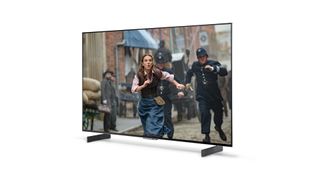
What is Dolby Vision?
Dolby Vision HDR was initially planned for the company's Dolby Cinemas, combining with Dolby Atmos sound in an attempt to take on IMAX cinemas – but Dolby Vision has now been adapted for the home.
The key difference between Dolby Vision and HDR10 is that the former allows for dynamic metadata to be added on a frame-by-frame basis so that you're always getting the image as intended. It's adapted to the specific abilities of your TV, too, and auto-calibrates your TV to what it deems to be the best settings. In theory, this should allow for a subtler, more improved image.
HDR10, meanwhile, applies its parameters scene-by-scene – for instance, every time a camera angle changes.
While the quality of a Dolby Vision presentation is still dependent on how well it's implemented on each film – and we've seen one or two that have not been great – Dolby Vision done right is definitely better than the best HDR10, particularly in terms of subtlety and nuance.
The more recent extension of Dolby Vision is Dolby Vision IQ, which adapts the picture's contrast and brightness according to the level of lighting in your viewing environment. The idea is essentially to make sure that the content doesn't come across too blown out or too gloomy and, when implemented well, it's very effective, essentially giving you the 'true', unadjusted image when watching in pitch blackness and only brightening when there's light in the room.
How can I watch Dolby Vision?
Both HDR10 and Dolby Vision can feature on the same TVs and discs, although Dolby Vision certainly isn't as commonplace as HDR10. Despicable Me and its sequel marked the first Ultra HD Blu-rays with Dolby Vision. More recent releases include Top Gun: Maverick and The Batman, as well as remastered classics such as 2001: A Space Odyssey and The Lord of the Rings Trilogy.
The two formats can happily coexist (Netflix, Amazon Prime Video, CBS All Access, Apple, ESPN+ and Disney+ offer both), although you will need a Dolby Vision-compatible disc and Blu-ray player (if using a disc), plus a TV capable of processing Dolby Vision, before you can enjoy the technology at home.
The list of Dolby Vision-compatible TVs and Blu-ray players isn’t quite as long as HDR10's, although almost all current 4K Blu-ray players support the format.
There are now lots of TVs that support Dolby Vision, too, although they do tend to be at the higher end of a manufacturer's range, likely due in part to the fact that there's a cost involved in licensing the technology and badge from Dolby.
LG was one of the first to adopt Dolby Vision, and it features across the company's premium TV ranges, including every one of its OLEDs from the last few of years.
Sony, too, features Dolby Vision across all of its more premium sets, ditto Panasonic and Philips (who also support HDR10+, more on which below.
But even now, there's still no suggestion of Samsung adding Dolby Vision to its TVs.
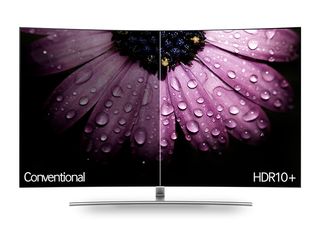
What is HDR10+?
Samsung has decided to confuse things even more by developing its own standard of dynamic HDR: HDR10+.
Just like Dolby Vision HDR, Samsung's tech uses dynamic metadata to boost HDR images frame-by-frame. This HDR format’s metadata is licensed to manufacturers of TVs, digital TV boxes and Blu-ray disc players, as well as content companies. Unlike Dolby Vision, HDR10+ is an open, royalty-free platform (although most brands will have to pay an annual administration fee) and, naturally, has its own certification and logos.
Almost every one of Samsung's current TVs (and those of many years previous), from the entry-level Samsung CU7000 to the flagship Samsung QN900C 8K TV, feature HDR10+. But since HDR10+ is aimed as a direct rival to Dolby, none of Samsung's TVs support Dolby Vision.
Samsung isn't the only manufacturer supporting HDR10+, though. While LG and Sony are both yet to get on board, Philips and Panasonic feature HDR10+ and Dolby Vision across a large portion of their TVs.
There are now some Ultra HD Blu-ray discs with HDR10+ currently on the market, too, including Parasite and News of the World, but far fewer than feature Dolby Vision. There are also discs such as Godzilla vs. Kong with metadata for both HDR10+ and Dolby Vision.
Four streaming services – Amazon Prime Video, Apple TV+, Rakuten and Google's pay-as-you-go film and TV offering on YouTube – support HDR10+.
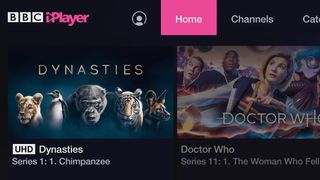
What is HLG?
HLG (Hybrid Log Gamma) is potentially the most important HDR format of all, because it is the one used by TV broadcasters.
The result of a joint research project between the BBC and Japanese broadcaster NHK, HLG is designed to deliver a more convenient HDR solution for the broadcast world.
It takes standard dynamic range and high dynamic range images and combines them into one feed, with HLG-compatible 4K TVs able to decode and show HDR images in all their glory.
At this point, HLG is almost as common as HDR10, so if you have an HDR TV, there's every likelihood that it will support both formats.
There's now a fair bit of content to watch in HLG, too. 2022's winter World Cup was broadcast live in HLG via the BBC iPlayer, and recent wildlife documentaries such as Frozen Planet II and Green Planet are also available to stream on-demand on iPlayer in 4K HLG. As are certain shows such as SAS: Rogue Heroes.
In fact, it all looks to be going well for HLG as the defacto HDR broadcast standard, with Sky now on board too. The UK satellite service added HLG support to its Sky Q set-top boxes in May 2020. Now, three years, there are well over 100 films on Sky available in HDR, as well as lots of Sky Originals and a set of Sky Nature shows.
Most significantly, live sport in HDR is now pretty common place on Sky. The broadcaster is now broadcasting all live Premier League matches in Ultra HD with HDR, as well as Formula 1.
To watch Sky Q’s HDR coverage you'll need the relevant Sky subscription as well as an HDR-ready Sky Q box and HLG-compatible TV.
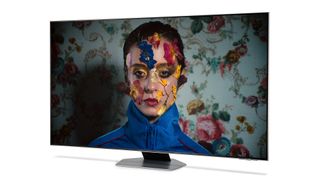
Is HDR better than 4K?
HDR should not be confused with the other big TV buzzword of the era: UHD (Ultra High Definition), also known as 4K. Both HDR and UHD are meant to improve your viewing experience, but they do so in completely different ways.
It’s a matter of quantity and quality. UHD is all about bumping up the pixel count, while HDR wants to make the existing pixels more accurate. Whether you’ve got a 32-inch TV in the bedroom or a 75-inch monster in the living room, HDR makes a visible difference.
Of course, 4K and HDR tend to come hand-in-hand. The vast majority of HDR-compatible TVs on the market are also 4K Ultra HD TVs.

How can you watch HDR?
To benefit from HDR10 or Dolby Vision, you’re going to need a display. Whether it's a television, a projector, a mobile phone or tablet, it needs to be HDR-compatible.
All of the best TVs support HDR video, so if you’re looking to buy a new 4K TV right now, it should support the format as standard spec.
Don't confuse normal HDR with picture processing modes with names such as 'HDR Effect'. These are somewhat confusing picture modes (this particular example is LG's) that claim to create HDR-quality images from non-HDR content.
Next, you will need something to play HDR content on. If your HDR content happens to be on a disc, e.g. an Ultra HD Blu-ray, you need an Ultra HD Blu-ray player. You can check out our list of the best 4K Blu-ray players you can currently buy.
The Sony PlayStation 5 and Xbox Series X games consoles will also do the job here. They both play 4K Blu-rays and support HDR10. Both the Xbox Series X and Xbox Series S are actually Dolby Vision-enabled, too, but only for games and streaming apps – not for movie discs.
Alternatively, you can stream HDR content via the likes of Netflix, Amazon Prime Video, the Apple TV app, Disney+, Rakuten and YouTube. The first four of those support both HDR10 and Dolby Vision (albeit only a tiny bit of the latter in the case of Amazon), Amazon, Rakuten and Apple TV+ add HDR10+ into the mix as well, while YouTube supports standard HDR10 and HDR10+ but not Dolby Vision.
Apps for most of these streaming services are built into most current TVs, but if yours is missing some or all of them, you can add a separate video streamer such as the Amazon Fire TV Stick 4K, Apple TV 4K or Chromecast with Google TV.
- These are the best media streamers to fill your app gaps.
Can I play games in HDR?
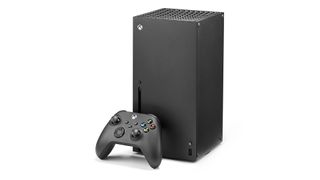
The Xbox Series X and Series S consoles both support gaming and (in the case of the Series X) Blu-ray playback in HDR10, plus streaming via its built-in apps in Dolby Vision. Dolby Vision gaming is available now, too – most recent first-party Microsoft games, such as Forza Horizon 5 and Halo Infinite, will play in Dolby Vision over HDR10 if you're TV supports it. Do be aware, though, that Dolby Vision gaming isn't advisable unless your TV has a dedicated input-lag reducing Dolby Vision game mode. LG's recent OLED TVs do, but Sony's do not.
HDR gaming is also enabled on the PS5, albeit only in the HDR10 format. In fact, the PS5 will by default upconvert all content to HDR, which doesn't always look great, but this can be disabled in the settings. The list of PS5 HDR games is very long, but includes recent blockbusters such as Elden Ring, Horizon Forbidden West, and the Resident Evil 4 and Dead Space remakes. Take a look at what we feel are the best PS5 games.

What is Mobile HDR?
The ill-fated Samsung Galaxy Note 7 was the first HDR smartphone. Since then, we've seen flagship smartphones from LG, Samsung, Sony, Apple, OnePlus, Motorola, Google, Oppo, Xiaomi and more launch with HDR support.
There's more mobile-optimised HDR content, too, with Netflix, Amazon Prime Video, Apple and Disney+ now streaming HDR content via their mobile apps.
The UHD Alliance – the organisation that sets standards for Ultra High Definition content – has also set the minimum spec for 4K phones and other portable devices showing HDR content.
Called Mobile HDR Premium, the standard is essentially a certification for smartphones, tablets and laptops that meet minimum standards in terms of resolution, dynamic range, colour space and bit depth. With this label, you're guaranteed a certain level of experience when watching 4K HDR content. It will also apply to 4K HDR content optimised for mobile devices.
The Samsung Galaxy S8 and Galaxy S8+ were the first smartphones to officially be given Mobile HDR Premium certification, while the new Galaxy S23 Ultra is also compatible. Many LG and Apple handsets, including the iPhone 14 and iPhone 14 Pro Max, have additional support for Dolby Vision.
Similarly, there are plenty of handsets that support HDR10+ too, of course, including Samsung's top mobiles such as the aforementioned Samsung Galaxy S23. It's also available on the OnePlus 11.
- Here are the best smartphones available.
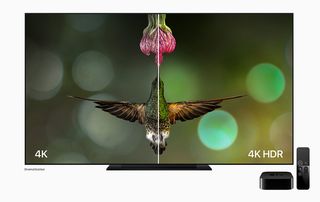
What HDR content is available?
HDR content is filmed or mastered in HDR – playing ordinary footage on an HDR TV alone won’t cut it. Amazon Prime Video was the first service to stream ‘HDR’ footage with shows such as Bosch and Transparent, but Netflix, Disney+ and all the big players also now have a very large selection, often in Dolby Vision too. On Netflix, that includes Stranger Things, The Night Agent, Ozark and Lost in Space.
These shows are usually also in 4K, but that’s not always the case. For example, American Gods is available in 4K, not HDR, whereas Star Trek: Discovery is available to stream in HDR – but not 4K. Your TV should state if HDR is being displayed or not.
The launch of the Apple TV 4K brought with it 4K HDR films through iTunes, including Dolby Vision on many titles, and all for no extra cost. The device has since been updated twice, with the latest model being the Apple TV 4K (2022).
Disney has gone big on HDR for its Disney+ service and lots of titles are available in Dolby Vision, including all of the Star Wars and Marvel Cinematic Universe films.
There’s also the Ultra HD Blu-ray format, of course, which includes HDR10 in its base specification (pretty much a given now with new 4K releases) and also supports Dolby Vision and HDR10+ on select titles.
- These are the best 4K Blu-rays to test your system.
The future of HDR
In a short space of time, HDR has become a reality for many people, and it's something that should definitely be considered when upgrading your current TV. Having now watched thousands of hours of HDR content on a vast number of compatible TVs, it's safe to say that High Dynamic Range can have a transformative effect on picture quality.
The combination of 4K and HDR on a TV means a super-sharp, super-dynamic picture – and is a clear step-up from Full HD. 8K TVs do HDR, too, and that combination takes things to another level, but there's currently no readily available 8K content and no date for when it might arrive, so there's little point getting too excited about that at this stage.
The only potential issue for those heading out to buy a new TV now is the confusion around which HDR formats really matter.
At the moment, we'd ensure yours has HDR10 and Hybrid Log Gamma as the bare minimum. It's likely your next 4K TV (unless it's a Samsung) will also support Dolby Vision, but it's worth checking the spec. It's also promising to see manufacturers such as Philips and Panasonic offering support for both HDR10+ and Dolby Vision on some TVs, which will put a lot of minds at rest.
Yes, the quest for ultimate picture performance looks to be in a very good place indeed. Consumers now have access to the displays, the sources and the content to complete the HDR chain. Make sure you embrace it too.
MORE:
4K streaming vs 4K Blu-ray vs Blu-ray – which is best?
These are the best TVs you can but right now
Get the What Hi-Fi? Newsletter
The latest hi-fi, home cinema and tech news, reviews, buying advice and deals, direct to your inbox.
Tom Parsons has been writing about TV, AV and hi-fi products (not to mention plenty of other 'gadgets' and even cars) for over 15 years. He began his career as What Hi-Fi?'s Staff Writer and is now the TV and AV Editor. In between, he worked as Reviews Editor and then Deputy Editor at Stuff, and over the years has had his work featured in publications such as T3, The Telegraph and Louder. He's also appeared on BBC News, BBC World Service, BBC Radio 4 and Sky Swipe. In his spare time Tom is a runner and gamer.
